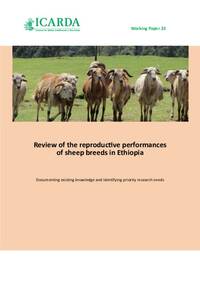Review of the reproductive performances of sheep breeds in Ethiopia: Documenting existing knowledge and identifying priority research needs

Authors:
There are numerous benefits of reviewing the current state of knowledge related to the reproductive
performances and characteristics of Ethiopian sheep. First, compilation of this information serves as a
resource material for scientists actively performing research within Ethiopia. It also contributes to the
understanding of data being collected and interpreted by researchers.
Second, it allows researchers to identify gaps in the current knowledge and determine future research
priorities. Being aware of past research allows scientists to avoid duplication and increases
collaboration. Increasing collaboration is vital due to limited funding for agricultural research. Collaboration
also increases productivity and enhances partnerships between institutions.
Third, compiling existing research can help influence policymakers. Sheep play an important role in
the rural economy of Ethiopia, but their productivity is among the lowest in sub-Saharan Africa. There
have been attempts to improve the productivity of native Ethiopian breeds through crossbreeding
with imported genotypes, but there have been little efforts to select indigenous breeds for improved
productivity including reproduction. Identifying gaps in the current state of knowledge might encourage
new investments in research. Understanding existing knowledge – or the lack of it – is critical to
those formulating agricultural policies.
